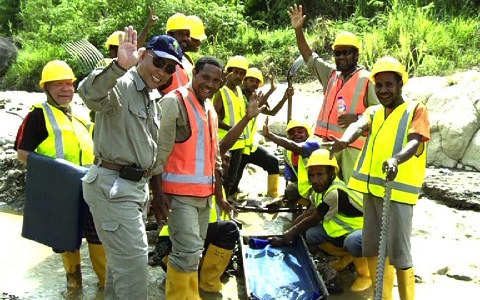In this episode:
Alluvial Gold Mining has been in PNG for quite some time. Captain Moresby reported minor amounts of gold in the hills surrounding what is now Port Moresby Harbour in 1873.
The year 1877 saw the first gold rush which began with 100 European miners, who mined the Laloki river, along with other rivers inland from Port Moresby.
In 1888, mining effectively commenced in Papua New Guinea with the discovery of payable gold in Sudest Island, situated near Misima Island.
The Morobe Goldfield was then discovered in 1922, and continued to operate until the Second World War.
It was a world class goldfield by the standards of the time, reaching a peak production of 8.5 tonnes of gold in 1942. The Mt. Kare Gold Rush then became the scene during the late eighties.
Today, PNG awaits another such rush to rekindle the interest in small scale mining. Meanwhile, the government has recognised the importance of this industry for the rural economy and significant steps are being taken to provide more education, extension and training facilities to the grass-root miners.
The Mineral Resources Authority’s Small Scale Mining Training Center (SSMTC) in Wau in Morobe Province is one such initiative.
This episode takes a look at how the MRA has responded to the need to educate and impart special mining techniques to the local people.
https://youtube.com/watch?v=fByf4UFHqKc%3Ffeature%3Doembed%26wmode%3Dopaque%26showinfo%3D0%26showsearch%3D0%26rel%3D0
previous post


